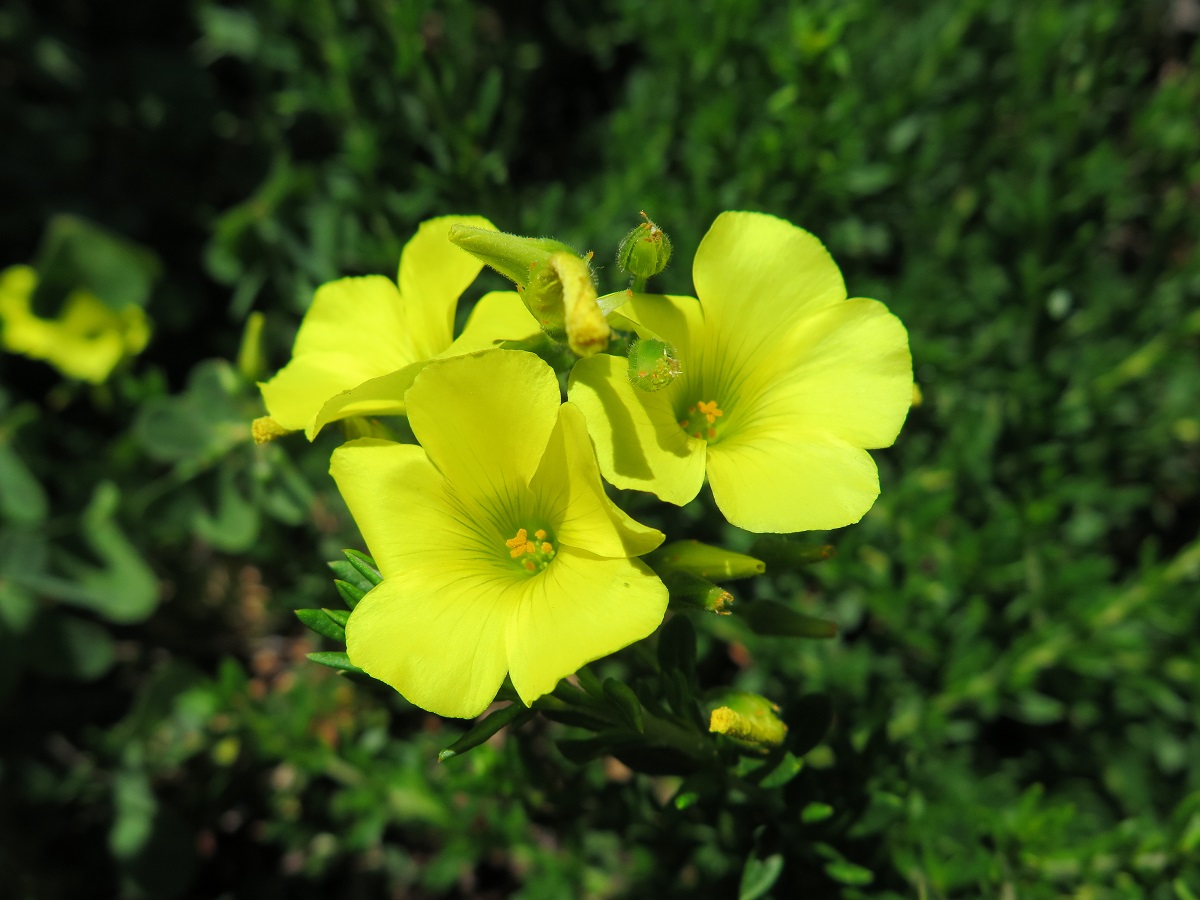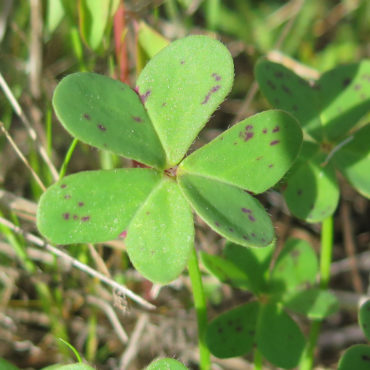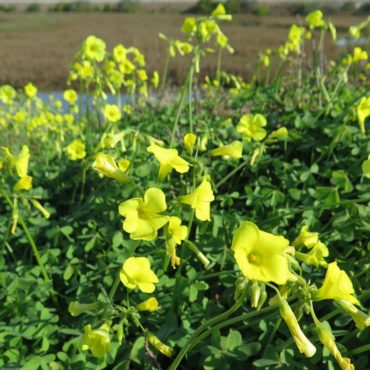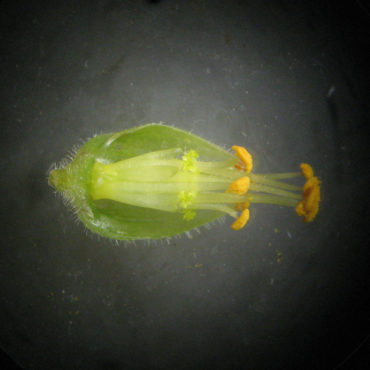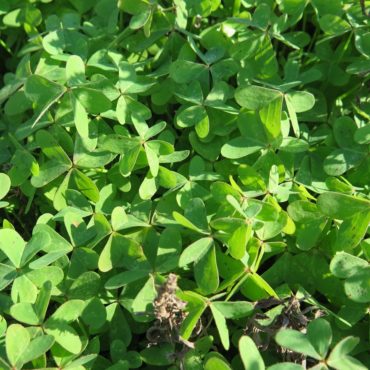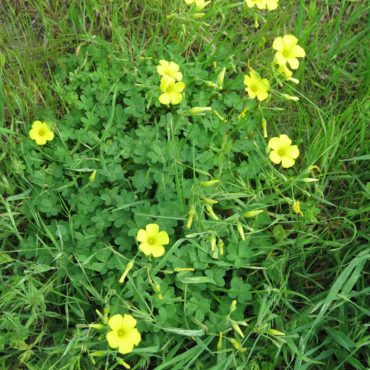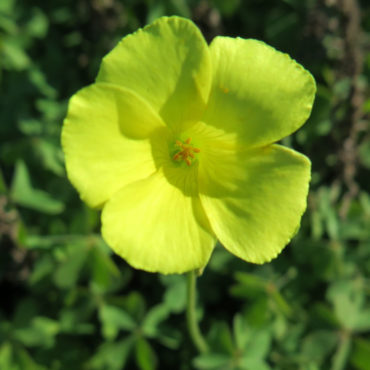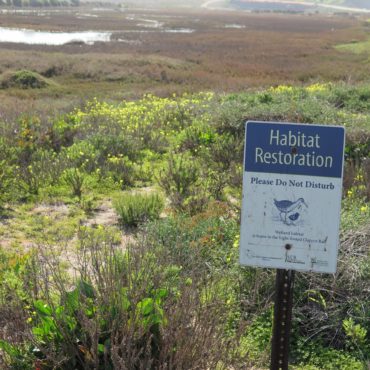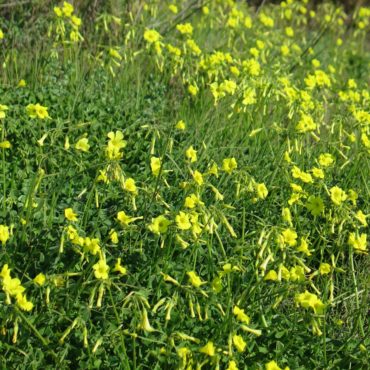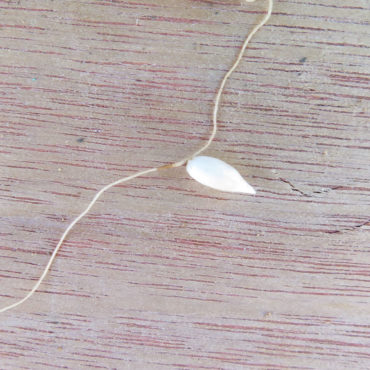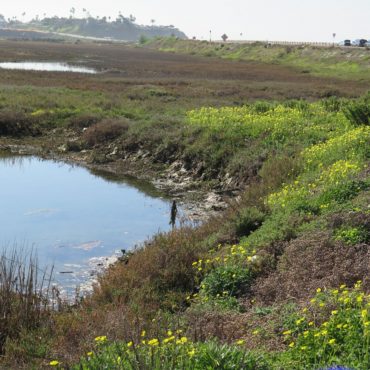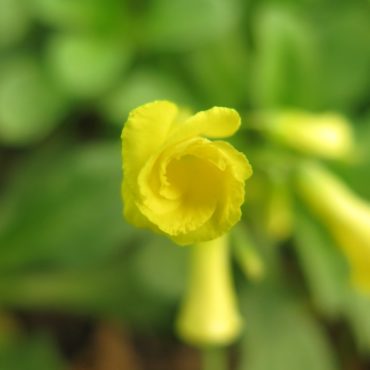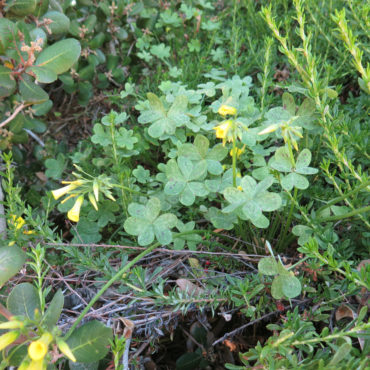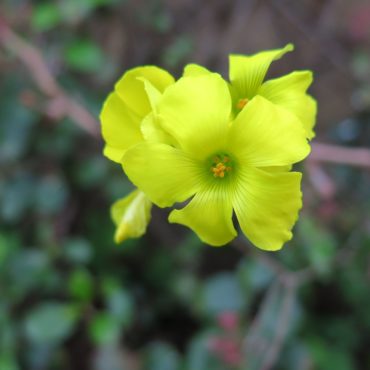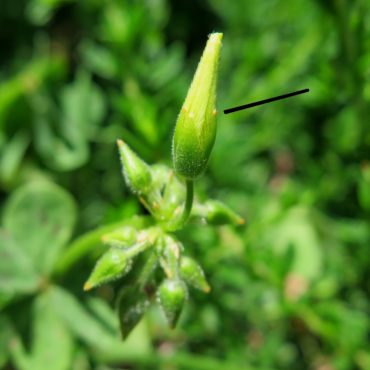Bermuda buttercup is a rounded perennial, less than 20 inches (50 cm) high, that grows from an underground bulb. A short stem supports a clump of clover-like leaves; clumps can form dense carpets. Leaves are usually 1½ inch (4 cm) or less across, and consist of three heart-shaped leaflets from a single point. Leaflets are often marked with red-brown splotches. Leaves and stems contains oxalic acid, which gives them a tart flavor, and results in another common name: sour grass.
Showy, symmetrical, bright yellow flowers open only during the day. Twenty of fewer flowers occur in clusters held above leaves on long peduncles and opening a few at a time. Each has five sepals and five petals. The light green sepals are lanceolate, and overlapping, forming a tube around each flower base. There may be tiny orange tubercles at the sepal tips. Yellow petals form a narrow tube at their bases and flare outward to 1½ inch (4 cm) across. Flowers may have tiny purple lines radiating outward from throat. There are ten bright yellow stamens, alternating short and long, and one pistil with five styles with capitate, papillose stigmas that are shorter than the anthers. In our area, blooms occur during the wet season, usually Nov. – April.
Fruits are not produced in California. Plants reproduce vegetatively by means of numerous tiny bulblets.
Three ploidy “types” exist in this species. In addition to diploid plants, tetraploid and pentaploid plants have been found. These are morphologically distinguishable by the length of the stamens and the relative position of the styles. So far as is known, plants in California are all pentaploid.

